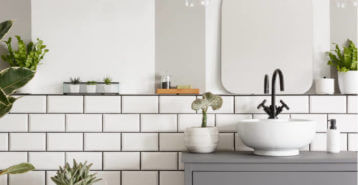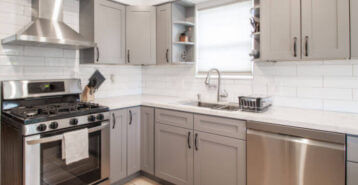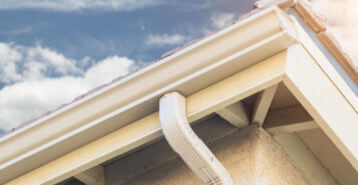Are you doing a plumbing project?
Modernize can pair you with three to four pros in your area, so you can compare options and save time and money.
- 10 Basic Plumbing Tips for Homeowners
- 1. Know How to Shut Off the Water
- 2. Build an Emergency Plumbing Kit
- 3. Do a Little Research
- 4. Keep it Simple With No Chemicals
- 5. Take Care of Your Garbage Disposal
- 6. Know What’s Flushable and What’s Not
- 7. Winterize Your Pipes
- 8. Educate Yourself
- 9. Pay Attention to Your Water Heater
- 10. Establish a Relationship With a Good Plumber
Are you a brand new homeowner? It is an exciting time, but it can also be filled with moments that make you nervous. The first time you notice a small leak in the bathroom, the toilet gives you a problem, or even when you deal with a clogged sink, you might feel out of your comfort zone. The good news is that many plumbing issues are relatively simple. The key to fixing them is catching them early, before they become serious problems.
So how do you do that? This handy guide will give you the plumbing tips you need to know to manage any bathroom or kitchen issues. We will walk you through how to spot them initially, to preparing a kit to deal with them ASAP, to knowing when to throw in the towel and call in a plumbing professional.
10 Basic Plumbing Tips for Homeowners
When you buy a new home, you often already know how to handle many important things. For instance, you should know where the electric service panel is, what the breakers and fuses do, how to handle the lawn equipment, run the thermostat, and so much more. But when a leak starts, it is easy to feel entirely lost. And that’s okay! Plumbing, just like electrical work, can be an intimidating beast. Let’s start with 10 basic plumbing tips to demystify the situation and get you better prepared to handle any leaks in your home.
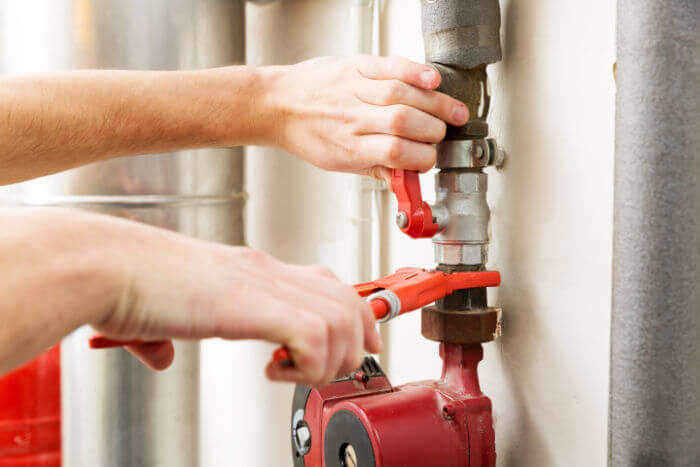
1. Know How to Shut Off the Water
In most homes, the water can be shut off at two places: at the appliance or fixture itself, and for the whole house. For instance, look under your sink or behind the toilet. See those little knobs that connect with the pipes? Those are the shut off valves for those fixtures. Simply turn them until the water is off. The main shut off valve (which controls water throughout your entire home) will be outside, where the water feeds into the structure. You might need a dedicated tool, such as a water shut-off key, to shut off the water at the main.
2. Build an Emergency Plumbing Kit
Everyone knows how important it is to have a high-quality plunger around the house. But there are other things that can help you out when issues arise with the pipes. Building an emergency plumbing kit to solve issues on your own is part of any list of basic plumbing tips. Consider adding these things to create a basic plumbing kit:
- Adjustable wrench
- Tongue-and-groove pliers
- Screwdrivers
- Plumber’s tape
- Pipe sealant
- Duct tape
- Set of hex keys
- Clip light for working under cabinets
- Auger and hand snake
3. Do a Little Research
Many small leaks can be handled by replacing a small part of the piping system, tightening part of a faucet, or even changing out an aerator. Take the time to browse how-to articles for common plumbing problems, such as a running toilet or slow-draining sink. You might be surprised to find how easy it can be to do simple things yourself, like replace a valve in the back of the toilet.
4. Keep it Simple With No Chemicals
If you have a clog, you might be tempted by the promises of liquid drain cleaner. While this might work at first, it actually causes more damage deep in the pipes, eventually creating even more problems down the road.
Instead, try using baking soda and vinegar to create a strong fizzing effect that can help break up clogs and clear gunk from drains. Follow it with boiling water to clean the pipes even more thoroughly.
5. Take Care of Your Garbage Disposal

Find the Right Contractor for Your plumbing Project
Whether you’re ready to begin your project now or need some expert advice, our network of contractors are here to help. With a few simple questions, we’ll find the best local professionals for you
Be cautious about what you put down the disposal. Avoid pouring in fats, oils, and grease, as these are a surefire way to get a clog. Beware of certain foods too, such as celery or bones, as they can lodge in the works. Always run the disposal with water flowing.
6. Know What’s Flushable and What’s Not
Some hygiene wipes say they’re flushable and kind to sewer systems. Guess what? They’re not! Though they do degrade – eventually – they take a very long time to do so. Before that happens, too many of them can block up the pipes. Other things that aren’t flushable include:
- Baby wipes
- Feminine hygiene products
- Paper towels
- Cotton balls or swabs
- Dental floss
7. Winterize Your Pipes
Even if you live in a warmer climate, cold snaps can and do occur. When they do, they can leave you with a watery mess. Installing insulating pipe sleeves around all the pipes you can reach, disconnecting and draining garden hoses, using frost-free faucets and covers on them during the winter, and keeping your home warm will help ensure those pipes do not freeze. If you want added insurance on the coldest nights, turn the faucets on at a trickle before you go to bed at night to keep water flowing.
8. Educate Yourself
The more knowledge you have, the more confident you will be when something does go wrong. Look to places like Modernize to get valuable information on what to do if things go haywire. In the meantime, keep little tips in mind that will save you from big headaches later, such as:
- Use that baking soda and vinegar solution on your drains every few months, whether they seem to need it or not. Trust us – they need it.
- Invest in a drain strainer for the shower. It will save you from those nasty clogs.
- Learn to open up the drain trap under the sink to catch those small things that will inevitably fall in, like your favorite ring. (It happens more often than you might think!)
- Test your water. If you have hard water, you can help out the pipes by using a water softener system.
- Replace your toilet supply lines with flexible, braided pipes. Do the same with your washing machine supply lines.
- Monitor your home’s water pressure with a low-cost, simple water pressure gauge. Water pressure that is too high can lead to problems.
9. Pay Attention to Your Water Heater
It usually works just fine and so it gets overlooked, until the day comes when it just up and quits. Prevent that shock of pure cold water by getting it inspected on a regular basis. Consider replacing it once it reaches a double-digit age.
10. Establish a Relationship With a Good Plumber
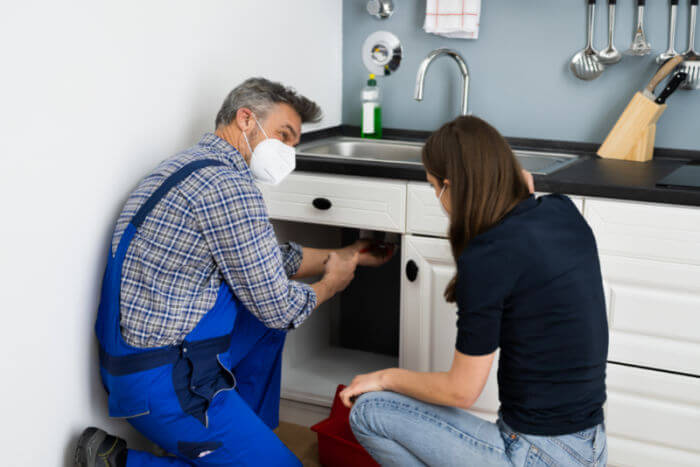
Find a reputable plumbing company and ask them to come in to inspect your plumbing. They can show you problem areas, fix small issues before they become a big deal, and establish a maintenance plan with you if necessary. Get the emergency numbers and keep them on hand in the event of a water emergency.
When you’re looking for a professional to help with plumbing needs, look to Modernize. We can connect you with local contractors who know exactly what they’re doing and can make your life much easier.
Find the Right Contractor for Your plumbing Project
Whether you’re ready to begin your project now or need some expert advice, our network of contractors are here to help. With a few simple questions, we’ll find the best local professionals for you
Reviews from Real Homeowners
Welcome to Homeowner Resources! We are the Modernize blog. Modernize pairs more than 3 million homeowners a year with pre-vetted contractors in their area. This blog started because we believe homeowners should know everything about their homes, from how their HVAC works to which front door colors they might love. On Homeowner Resources, you can find information on every part of your home, right down to how you can negotiate with contractors to get the best price. Here's more about the blog.
Need a contractor? Learn more about how Modernize finds the right pro for you.
